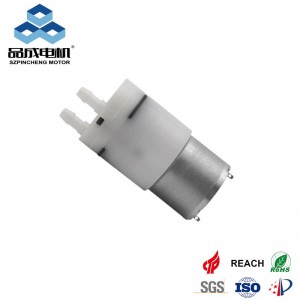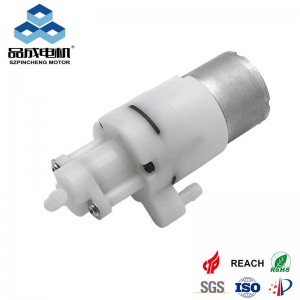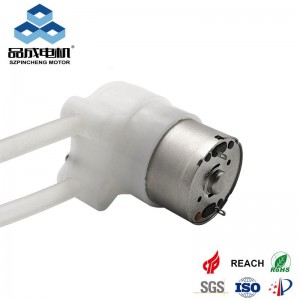Micro water pumps supplier
Miniature diaphragm pumps have rapidly evolved from simple fluid transfer devices to critical components in high-stakes medical applications. These compact electromechanical systems — including mini DC diaphragm pumps, DC vacuum pumps, and DC diaphragm water pumps — leverage a unique operating principle: an electrically driven diaphragm creates pressure differentials to move fluids or gases without internal contamination. Their ability to maintain sterility while offering precise flow control positions them as indispensable tools in modern healthcare technology.
I. Core Principles and Sterility Assurance Mechanisms
The operational heart of a miniature diaphragm pump lies in its isolated fluid pathway. When a DC motor (typically 3V-24V) actuates the diaphragm, it creates alternating vacuum and pressure phases within the pump chamber. This draws fluid or gas in through the inlet valve and expels it through the outlet — all without the fluid contacting internal mechanical parts like motors or gears46. This physical isolation is foundational for sterile applications.
Key sterility-enhancing features include:
-
Sealless Design: Eliminates shaft seals — a common failure and contamination point in traditional pumps2
-
Dry-Running Capability: Allows operation without fluid cooling, preventing damage during transient dry conditions in diagnostic equipment7
-
Low Dead Volume & Smooth Flow Paths: Minimizes fluid retention zones where bacteria could proliferate. Advanced pumps achieve surface roughness below Ra 0.4μm, hindering biofilm formation5
II. Medical-Grade Materials and Certifications
Material selection directly impacts biocompatibility and chemical resistance in medical settings. Leading pumps utilize:
-
PTFE (Teflon) or PPS Polymers: For wetted paths; inert, autoclavable, and resistant to aggressive disinfectants28
-
Santoprene (TPE) or Fluorosilicone Diaphragms: Deliver long-term flex life while resisting alcohols and oxidizing cleaners8
-
EPDM/FKM Valves: Ensure leak-free sealing against proteins or lipids in biological fluids8
These materials undergo rigorous validation per ISO 10993 standards for cytotoxicity and sensitization. Compliant pumps also carry certifications like CE (Medical Directive), RoHS, and often FDA 510(k) clearance for specific applications38.
III. Critical Applications in Sterile Medical Environments
1. Diagnostic & Laboratory Equipment
-
Vacuum Filtration: Chemker series PTFE diaphragm pumps generate up to -750mmHg vacuum for sterile filtration in cell cultures or reagent preparation, with oil-free operation eliminating sample contamination2.
-
Analytical Instrumentation: Mini-Dia-Vac pumps provide pulsation-free gas sampling in blood analyzers and breathalyzers, critical for accurate readings1.
2. Therapeutic Device Integration
-
Infusion Pumps: Brushless DC diaphragm pumps (e.g., SEAFLO SFDP1 series) enable precise, pulseless drug delivery at 120 PSI with flow accuracy ≤±2%, essential for chemotherapy or insulin dosing8.
-
Extracorporeal Circuits: In blood pumps or dialyzers, hermetically sealed DC pumps prevent blood contact with external contaminants while withstanding steam sterilization (121°C)57.
3. Portable & Point-of-Care Devices
-
Handheld Diagnostic Units: Micro pumps like Feiyinsi’s 32g DC model (0.4L/min flow) enable compact, battery-powered designs for field blood analysis or ventilators3.
-
Wearable Drug Delivery: Low-voltage (3V-5V) pumps support ambulatory insulin patches with ultra-quiet operation (<40dB)8.
Table: Performance Requirements for Medical Diaphragm Pumps by Application
| Application | Flow Rate | Pressure/Vacuum | Critical Features | Material Requirements |
|---|---|---|---|---|
| Infusion Therapy | 0.1–10 mL/min | Up to 120 PSI | ±2% flow accuracy, low pulsation | USP Class VI plastics, EPDM seals |
| Lab Filtration | 5–38 L/min | -670 to -750 mmHg | Chemical resistance, oil-free | PTFE wetted path |
| Portable Ventilators | 15–30 L/min (air) | -30 kPa to +45 kPa | Low power (12V DC), lightweight | Sterilizable polymers |
| Dialysis Systems | 200–500 mL/min | 8–15 PSI | Biocompatibility, self-priming | FDA-grade silicones |
IV. Overcoming Sterility Challenges: Design Innovations
Medical DC diaphragm pumps incorporate specialized engineering to meet stringent hygiene standards:
-
Sterilization Compatibility
Pumps withstand autoclaving (SIP cycles at 121°C), Ethylene Oxide (EtO), and gamma irradiation without performance degradation. PTFE diaphragms retain >90% tensile strength after 100 sterilization cycles5. -
Cleanability & Drainability
Smooth internal contours and self-draining orientations (e.g., vertical mount with pump head downward) prevent fluid entrapment per ASME BPE standards7. CIP (Clean-in-Place) cycles use NaOH or HNO₃ solutions without corrosion. -
Particle & Biofilm Control
Ultra-precise valves (e.g., rolling-sleeve designs) handle fluids with ≤2mm particulates — critical for IV applications — while minimizing shear-induced hemolysis in blood products8. Antimicrobial coatings like silver-ion-doped polymers further inhibit microbial growth.
V. Future Innovations & Technical Roadmap
The next generation of medical mini-diaphragm pumps focuses on:
-
Intelligent Monitoring: Integrated IoT sensors detect diaphragm fatigue or flow anomalies, enabling predictive maintenance using AI algorithms5.
-
Ultra-Miniaturization: Pumps as small as 20mm diameter (e.g., NIDEC models) enable implantable or microfluidic drug delivery5.
-
Advanced Materials: Graphene-reinforced diaphragms extend cycle life to >50 million strokes; biodegradable membranes reduce environmental impact6.
-
Energy Efficiency: Brushless DC motors (e.g., SEAFLO’s 24V models) cut power consumption by 40% vs. brushed units, crucial for battery devices38.
Table: Medical-Grade Material Selection Guide for Diaphragm Pumps
| Component | Material Options | Sterilization Method | Biocompatibility | Key Applications |
|---|---|---|---|---|
| Diaphragm | Reinforced PTFE | Autoclave, EtO, Gamma | ISO 10993 Certified | Infusion pumps, dialyzers |
| Diaphragm | Platinum-cured Silicone | EtO, Gamma | USP Class VI | Peristaltic pump inserts |
| Valves | FKM (Fluorocarbon Rubber) | Autoclave (limited cycles) | FDA 21 CFR 177.2600 | Solvent handling, disinfectants |
| Pump Head | PPS (Polyphenylene Sulfide) | Autoclave, Chemical | Low extractables | Diagnostic reagent handling |
| Seals | EPDM | EtO, Steam (≤100°C) | ISO 10993-5/10 Compliant | Water purification, IV sets |
Conclusion: Enabling Next-Generation Medical Devices
Miniature DC diaphragm pumps have transcended their industrial origins to become enablers of life-critical medical technologies. Through hermetic fluid isolation, chemically inert materials, and validated sterilization protocols, they reliably meet the zero-contamination mandates of IVD analyzers, infusion systems, and implantable drug delivery. As material science advances — coupled with smarter, more efficient DC motor designs — these pumps will continue to underpin innovations from lab-on-a-chip diagnostics to personalized biotherapeutics. For engineers designing tomorrow’s medical devices, mini diaphragm pumps offer a compelling blend of precision, sterility, and compact power.
you like also all
Post time: Jun-24-2025




